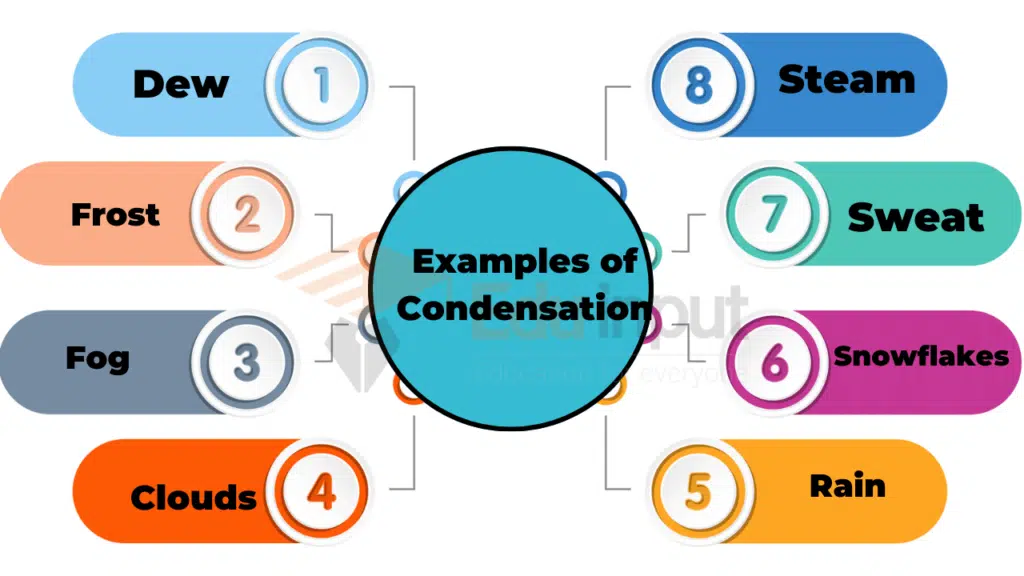12 Everyday Examples of Condensation Explained
Condensation is the process by which water vapor in the air transforms into liquid water. It occurs when humid air cools enough that it reaches its dew point temperature – the temperature at which the air cannot hold all the water vapor it contains.
The excess water vapor then condenses to form tiny droplets of liquid water on surfaces. This transformation from gas to liquid is responsible for the formation of clouds, fog, dew, frost, and more.

Here are 12 examples of condensation with explanations…
1: Dew on grass in the morning
As the air cools overnight, it can no longer hold as much water vapor. The water vapor condenses on surfaces like blades of grass, forming water droplets known as dew.
2: Frost on a car windshield
On cold mornings, the cold glass surface of a car windshield causes atmospheric water vapor to condense and freeze into frost.
3: Fog
When air cools to its dew point temperature, water vapor condenses into tiny liquid water droplets suspended in the air, creating fog. Fog commonly forms in valleys and over bodies of water.
4: Clouds
Clouds form when warm, moist air rises, expands, and cools. The cooler air reaches its dew point, causing water vapor to condense into tiny cloud droplets. Different types of clouds depend on the altitude and weather conditions.
5: Rain
Within clouds, water droplets condense onto even tinier particles like dust and salt, growing larger and heavier until they fall as precipitation, like raindrops.
6: Snowflakes
If clouds are cold enough, condensed water vapor freezes into ice crystals instead of liquid raindrops. As the ice crystals fall, they accumulate more water vapor and grow into snowflakes.
7: Sweat
As sweat evaporates off the skin, the evaporation has a cooling effect. In humid conditions where sweat evaporates more slowly, the cooling effect can cause the remaining sweat to condense on the skin’s surface.
8: Steam condensing into liquid water
When steam from boiling water contacts cooler air, it condenses from the gas phase back into liquid water droplets. This condensation can be seen as a cloud of fog over boiling water.
9: Breath condensing in winter
Warm, moist breath contains water vapor that condenses into tiny droplets when exposed to cold outside air in the winter. This condensation appears as a visible fog of breath vapor.
9: Condensation on cold glasses or windows
When warm, humid indoor air contacts cold glass surfaces like eyeglasses or windows, its water vapor condenses. This leaves “fogged” glasses and droplets on the window glass.
10: Condensation in air conditioning units
Air conditioning units cool warm indoor air below its dew point, causing atmospheric moisture to condense on the cold coils and drip off into a collection pan.
11: Condensation in refrigerators
Similarly, the cold environment inside a refrigerator causes moisture in the air to condense onto the interior surfaces, requiring periodic defrosting.
12: Water vapor from cooking condensing on kitchen surfaces
Boiling or steaming foods releases significant amounts of water vapor that can condense onto cooler kitchen surfaces and windows.



Leave a Reply